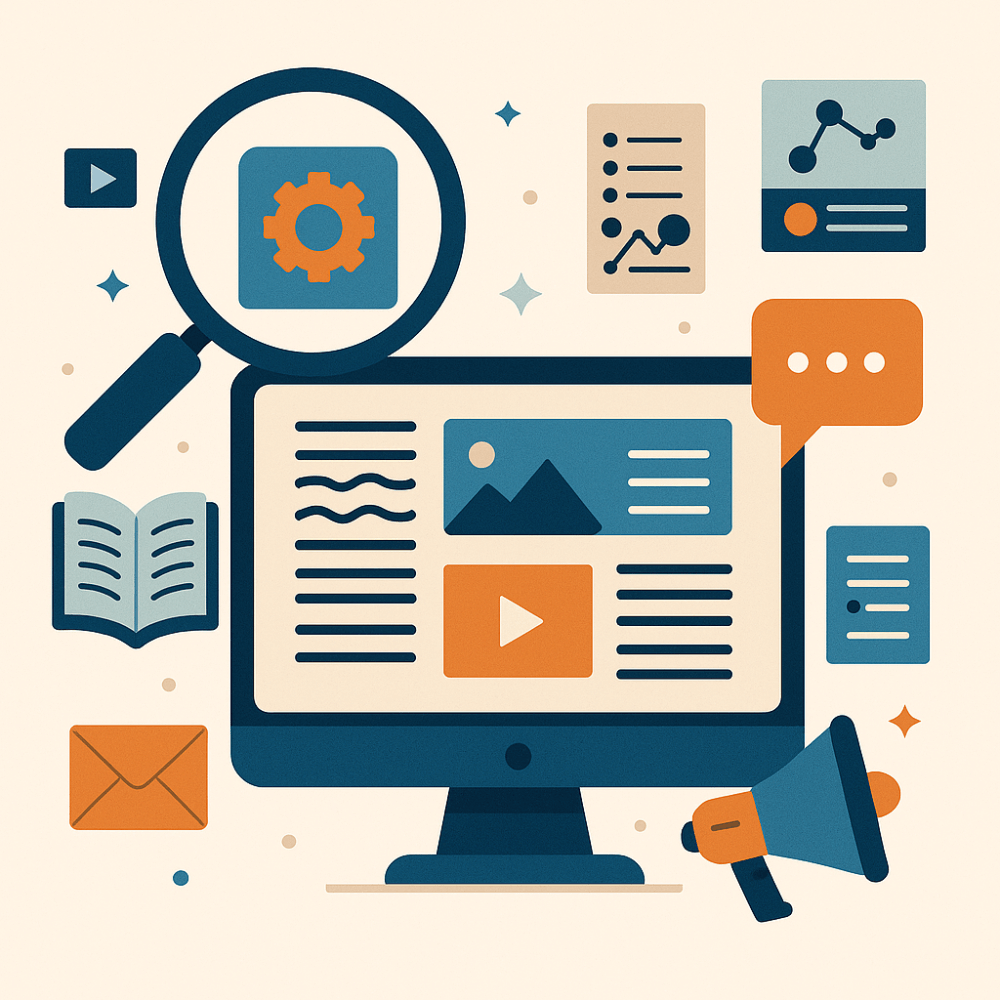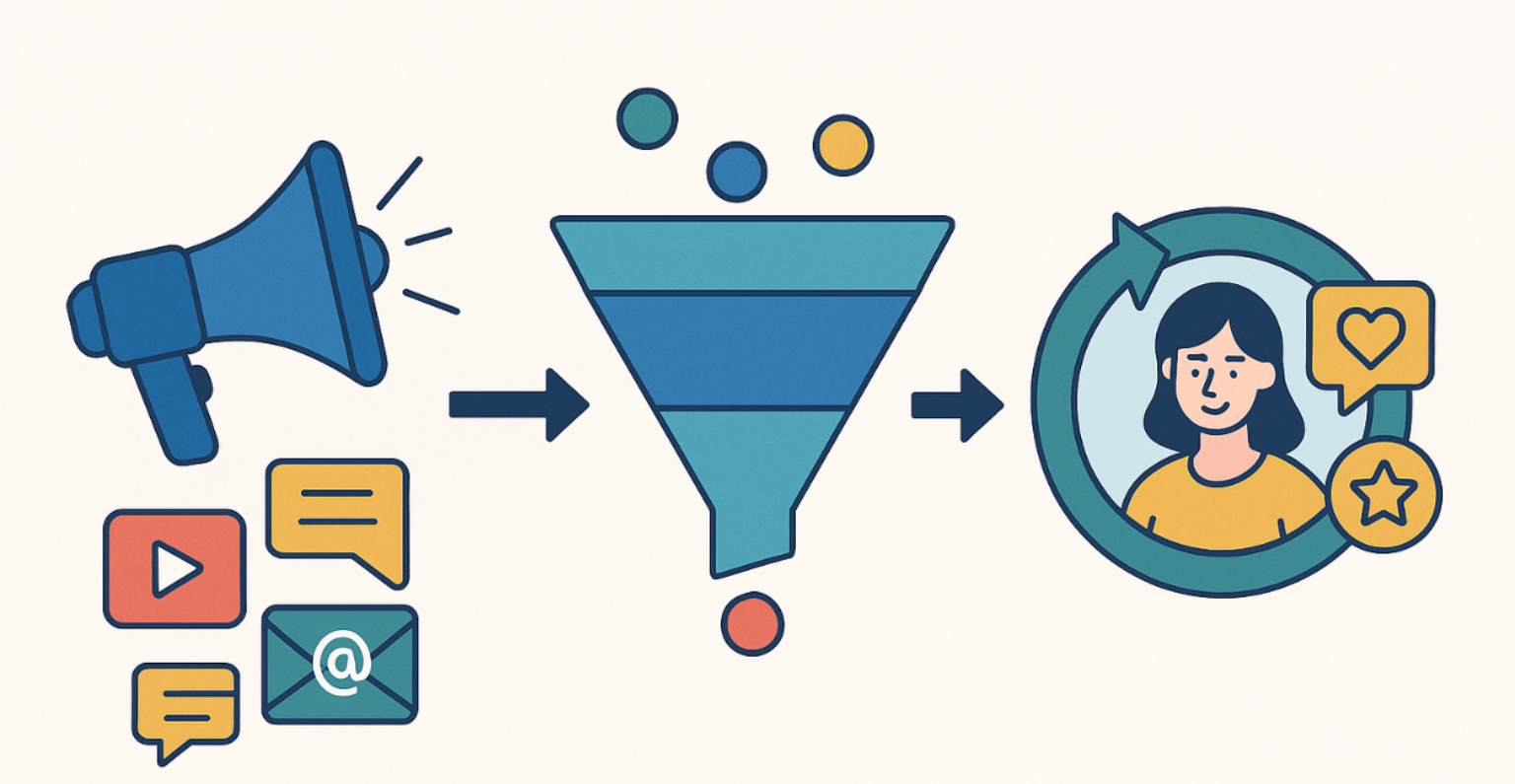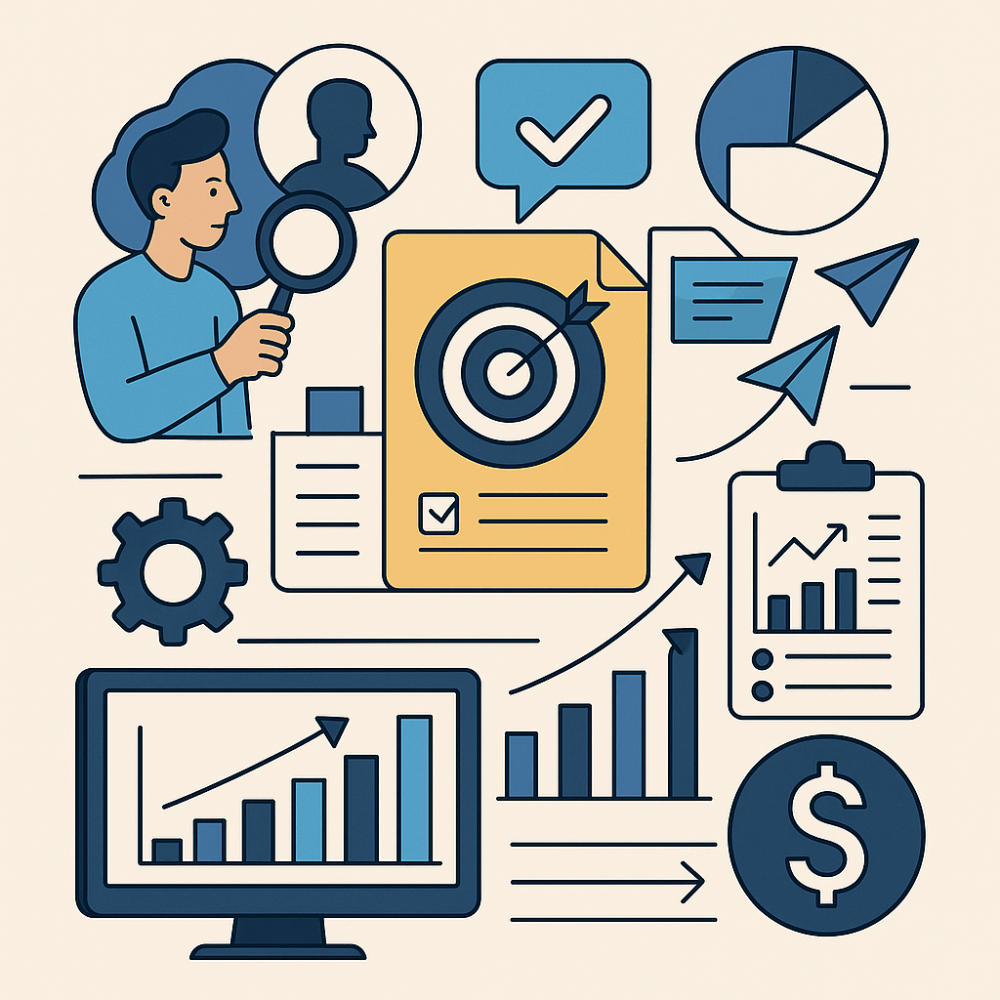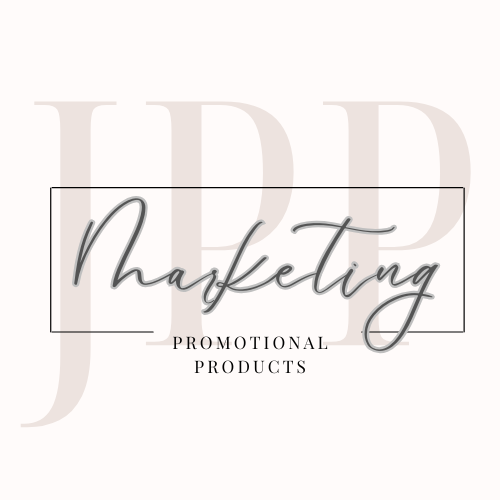
Welcome back to our four-part series dedicated to decoding product marketing job descriptions!
In the last installment, we covered these key PMM responsibilities:
- Multi-channel product marketing campaigns
- Develop and execute winning GTM strategies for innovative digital products
- Define and drive product launch plans, ensuring seamless execution across all marketing channels
If you missed part two, you can catch up here.
As a quick reminder, this series was written for anyone trying to translate years of behind-the-scenes magic into words that land them a product marketing job. I know how hard it is to write about your own experience while you’re still in it. So I did it with you, and for you.
I’ve pulled 15 real responsibilities straight from live PMM job descriptions that are buzzword-heavy, often vague, but very real expectations.
For each one, I’ll:
- Define the skill to remove ambiguity
- Share examples of relevant work experience that prove you’ve done it, even if you didn’t have “product marketing manager” in your title.
Because sometimes, product marketing isn’t about positioning a product. It’s about positioning you.
Ready for part three? Let’s get into it. 🚀
#7: Product-focused content marketing initiatives
📘 Definition
Product-focused content marketing involves creating and distributing content that directly relates to your product or service, aiming to educate, engage, and ultimately, drive sales by highlighting its value and benefits.

🔍 Here’s a breakdown of key aspects
✅ 1. What is product-focused content marketing?
- Definition: It’s a content marketing strategy that centers on your product or service, showcasing its features, benefits, and how it solves customer problems.
- Purpose: To build brand awareness, establish thought leadership, and drive conversions by providing valuable, relevant content that resonates with your target audience.
📌 Examples
- Blog posts, case studies, webinars, tutorials, videos, infographics, eBooks, and social media content.
- Product-Led Alliance and Product Marketing Alliance do an excellent job at content marketing.
✅ 2. Why is it important?
- Builds trust and credibility: By providing valuable, educational content, you position your brand as an expert in your industry, building trust and credibility with potential customers.
- Educates and engages: Product-focused content helps potential customers understand the value of your product and how it can solve their problems, leading to increased engagement and conversions.
- Differentiates your brand: By highlighting what makes your product unique, you can differentiate your brand from competitors and attract the right customers.
- Leads to higher sales: By providing valuable content that resonates with your target audience, you can drive higher sales and customer acquisition.
✅ 3. How to implement a product-focused content marketing strategy
- Identify your target audience: Understand who your ideal customers are, their needs, and their pain points.
- Define your content pillars: Determine the key themes and topics that will be the focus of your content strategy.
- Create high-quality content: Focus on creating valuable, engaging, and informative content that resonates with your target audience.
- Promote your content: Distribute your content across various channels, including social media, email, and your website.
- Track your results: Monitor your content performance and make adjustments as needed to optimize your strategy.
📌 Examples of content formats
- Blog posts: Share industry insights, product updates, and how-to guides.
- Case studies: Showcase how your product has helped other customers achieve their goals.
- Webinars: Host online events to educate your audience about your product and industry trends.
- Tutorials: Create step-by-step guides on how to use your product.
- Videos: Showcase your product in action and engage your audience with visual content.
- Infographics: Present complex information in a visually appealing and easy-to-understand format.
- EBooks: Offer in-depth guides and resources on your product and industry.
- Social media content: Share engaging content on social media platforms to build brand awareness and drive traffic to your website.
🔑 Key considerations
- Consistency: Regularly publish high-quality content to keep your audience engaged and informed.
- Relevance: Ensure your content is relevant to your target audience and their needs.
- Value: Provide valuable information and insights that educate and engage your audience.
- Call to action: Include clear calls to action in your content to encourage your audience to take the next step.
- Track and analyze: Monitor your content performance and make adjustments as needed to optimize your strategy.
💼 Relevant work experience
When showcasing your product-focused content work, highlight how you translated features into benefits, educated customers at key moments, and drove measurable results.
✅ 1. Strategy and audience alignment
Audience research and persona development
- Created targeted buyer personas based on direct customer interviews, behavioral data, and sales input to guide content that speaks directly to real customer needs, objections, and goals.
- Identified pain points across multiple verticals (hospitality, health-tech, compliance, education) to ensure content highlighted real-world outcomes, not just features.
Content pillar definition
- Developed and structured content pillars around compliance, water safety, automation, platform ROI, and digital transformation, aligning each piece with product capabilities and business value.
✅ 2. Content creation and formats
Blog posts
- Wrote and edited product-focused blog posts covering feature deep-dives, industry use cases, implementation tips, and ROI breakdowns.
- Translated technical capabilities into storytelling that resonates with decision-makers and end-users.
Case studies
- Created case studies showcasing how customers in hospitality and healthcare used your product to reduce costs, improve compliance, and increase operational efficiency.
- Highlighted measurable outcomes to build social proof and support sales.
Webinars and thought leadership
- Participated in or helped develop webinar content, including Product-Led Alliance sessions and client education events, positioning your product (and you) as an industry expert.
- Contributed to thought leadership content about product strategy, launch, and enablement best practices.
Social media
- Repurposed product messaging and launch announcements into LinkedIn posts, email updates, and short-form promotional content with clear CTAs and customer relevance.
- Shared behind-the-scenes and storytelling content to humanize product value and build brand engagement.
Infographics and visual aids
- Collaborated with design to turn complex product workflows or compliance requirements into visually engaging, digestible formats for onboarding, marketing, and sales teams.
✅ 3. Distribution and promotion
Multi-channel promotion
- Promoted content via email marketing (HubSpot), LinkedIn, partner networks, landing pages, and internal newsletters to ensure maximum visibility.
- Aligned timing with product releases and feature launches, reinforcing value with well-timed content drops across relevant touchpoints.
Campaign integration
- Wove content assets into end-to-end marketing campaigns, from pre-launch education to post-launch adoption, ensuring that content served the full customer journey.
✅ 4. Optimization, tracking, and iteration
Performance monitoring
- Monitored engagement metrics across blog, email, and in-app content using HubSpot, GA, and Fullstory, using data to inform future content angles and formats.
Iterative content strategy
- Based on performance data and stakeholder feedback, revised underperforming content, repurposed high-performing pieces into new formats (e.g., video or email sequences), and identified gaps to fill.
🔑 Key product-focused content assets
- Product feature guides and one-pagers
- Persona-aligned blog posts
- Case studies with quantified results
- Webinar decks and talk tracks
- LinkedIn campaigns for product messaging
- Onboarding & tutorial content for in-app and help docs
- Email sequences tied to product engagement or feature adoption
- Thought leadership articles and social storytelling posts
#8: Craft value-based messaging frameworks
📘 Definition
To craft effective value-based messaging frameworks, start by understanding your target audience, defining your brand values and personality, developing a clear value proposition, and then crafting key messages that resonate with your audience, ensuring consistency across all platforms.

🔍 Here’s a more detailed breakdown
✅ 1. Understand your target audience
- Identify their needs and pain points: What problems do they face, and what are they looking for in a solution?
- Analyze their demographics, interests, and behaviors: This will help you tailor your messaging to their specific needs and preferences.
✅ 2. Define your brand values and personality
- Articulate your company’s core values and mission: What principles guide your business, and what do you stand for?
- Develop a brand personality: Are you friendly, professional, innovative, or something else?
✅ 3. Develop a clear value proposition
- Clearly state the benefits your product or service offers: What makes you different from the competition, and why should customers choose you?
- Focus on the customer’s perspective: Emphasize how your offerings solve their problems and improve their lives.
✅ 4. Craft key messages
- Develop three to five core messages: These should be concise, memorable, and highlight the key benefits of your value proposition.
- Use a variety of messaging formats: Consider headlines, taglines, short-form copy, and longer-form content.
✅ 5. Ensure consistency in messaging
- Use a consistent tone of voice and style: This will help build trust and recognition with your audience.
- Keep your messaging aligned with your brand values and personality: Ensure that your messages reflect your brand’s identity.
✅ 6. Evaluate and update
- Regularly review your messaging framework: As your business and market evolve, so should your messaging.
- Gather feedback from customers: Use their insights to refine your messaging and ensure it continues to resonate with your audience.
💼 Relevant work experience
When sharing your experience, focus on how you aligned messaging with real customer needs and ensured consistency across teams and channels.
✅ 1. Understand your target audience
- Led voice of the customer programs and customer interviews to deeply understand customer pain points, buying triggers, and unmet needs across verticals like hospitality, health-tech, HR-tech, compliance, and education.
- Used tools like Fullstory and HubSpot to gather behavioral data and segmentation insights that informed messaging variations based on persona, industry, and stage of the customer journey.
- Created and maintained detailed buyer personas, mapping each to their emotional and functional drivers to inform more impactful messaging.
✅ 2. Define brand values and personality
- Helped shape and evolve brand identity for both your consulting firm and the products you’ve marketed, anchoring messaging in values like clarity, trust, empathy, innovation, and operational excellence.
- Established a consistent brand tone that was professional yet approachable, reflecting your product’s positioning in regulated, high-stakes industries while maintaining warmth and clarity in communication.
- Infused every internal and external asset with brand-aligned storytelling, ensuring that even technical content felt human and value-driven.
✅ 3. Develop a clear value proposition
- Crafted and refined product value propositions that shifted messaging from feature-focused to benefit- and outcome-driven narratives.
- Positioned products like Product X as must-have platforms for compliance, cost control, and risk reduction, with tailored messaging by role (e.g., facility managers, operations leads, executives).
- Built value propositions around customer goals, not just product capabilities, highlighting how your solutions improved lives, saved time, reduced costs, and ensured peace of mind.
✅ 4. Craft core messages and messaging frameworks
- Developed three to five key message pillars for each product/feature launch, tailored by audience segment and mapped to value propositions.
- Created messaging documents and playbooks used across marketing, sales, customer success, and onboarding teams to ensure consistent communication.
- Translated product capabilities into taglines, elevator pitches, headlines, email copy, and campaign themes, ensuring flexibility in message length and format.
📌 Examples of messaging assets
- Positioning statements & one-liners
- Battlecards with objection-handling language
- Taglines and headlines for campaigns
- Email subject lines tied to customer pain points
- Long-form launch messaging for internal comms & blogs
✅ 5. Ensure consistency across channels
- Oversaw internal alignment by training GTM teams on messaging frameworks, ensuring every customer touchpoint, from sales calls to support tickets, reflected the same strategic narrative.
- Partnered with designers, sales leaders, and execs to cascade messaging across channels, including email, social, web, webinars, and in-app messaging.
- Created and maintained living messaging guides that could be updated and distributed to teams as positioning evolved.
✅ 6. Evaluate, optimize, and evolve
- Ran A/B testing on email subject lines, CTAs, and campaign copy to see which messaging resonated best with each segment.
- Collected feedback post-launch from sales, support, and customers, identifying where messaging was strong and where refinement was needed.
- Regularly revised messaging to reflect product evolution, new ICPs, and changing market dynamics.
🔑 Key messaging frameworks
- Company-wide messaging for Product X’s repositioning from a point solution to a multi-product ecosystem
- Persona-based value pillars for GTM campaigns across verticals
- Messaging playbooks for fractional consulting clients via VOC Strategies
- Sales enablement messaging frameworks, including value drivers, pain points, and competitive positioning
#9: Create and execute targeted integrated revenue campaigns
📘 Definition
To create and execute targeted, integrated revenue campaigns, define clear goals, identify your target audience, choose the right channels, craft compelling messages, and track results to optimize your efforts.

🔍 Here’s a more detailed breakdown
✅ 1. Define your goals and objectives
- What do you want to achieve? Specific, measurable, achievable, relevant, and time-bound (SMART) goals are crucial.
- Examples: Increase website traffic, generate leads, boost sales, improve customer retention, or expand market share.
- Set key performance indicators (KPIs): What metrics will you use to measure success?
- Examples: Website conversion rates, lead generation cost, customer lifetime value, or revenue growth.
✅ 2. Identify your target audience
- Conduct thorough market research: Understand your audience’s demographics, psychographics, behaviors, needs, and pain points.
- Create buyer personas: Develop detailed profiles of your ideal customers to help you tailor your messaging and campaigns.
- Segment your audience: Group customers based on shared characteristics to personalize your approach.
✅ 3. Choose the right channels
- Consider where your target audience spends their time: Social media, email, search engines, industry events, or other platforms.
- Integrate multiple channels: Use a mix of online and offline tactics to reach your audience effectively.
- Examples: Email marketing, social media campaigns, paid advertising, content marketing, SEO, and events.
✅ 4. Craft compelling messages
- Develop a consistent brand voice and message: Ensure your messaging is clear, concise, and resonates with your target audience.
- Create engaging content: Use a variety of formats, such as blog posts, videos, infographics, and social media updates.
- Personalize your messages: Tailor your content to specific audience segments to increase relevance and engagement.
✅ 5. Execute and track your campaigns
- Develop a detailed campaign plan: Outline your goals, target audience, channels, messaging, timeline, and budget.
- Launch your campaigns: Implement your plan and monitor your results closely.
- Track and analyze your results: Use analytics tools to measure your KPIs and identify areas for improvement.
- Optimize your campaigns: Make adjustments based on your data and results to maximize your ROI.
✅ 6. Tools to consider
- Customer relationship management (CRM) software: Manage customer interactions and track leads.
- Marketing automation platforms: Automate tasks like email marketing and social media scheduling.
- Analytics tools: Track website traffic, conversions, and other key metrics.
- Content management systems (CMS): Manage and publish your website content.
📌 7. Example of an integrated campaign
- Goal: Generate leads for a new software product.
- Target audience: Businesses in the technology industry.
- Channels: Email marketing, social media, and a webinar.
- Messaging: Highlight the benefits of the software and offer a free trial.
- Execution: Send targeted email campaigns to potential customers. Run social media ads on platforms like LinkedIn. Host a webinar to showcase the software and answer questions.
- Tracking: Monitor website traffic, lead generation, and webinar attendance.
- Optimization: Adjust messaging and channels based on performance data.
💼 Relevant work experience
When showcasing your experience, emphasize how you drove alignment across functions, used real-time data to adjust in-flight, and tied marketing activity directly to pipeline and revenue. The magic is in showing not just what you did, but how it performed.
✅ 1. Define goals and KPIs
- Set SMART goals for GTM and revenue campaigns such as improving product adoption, increasing lead-to-demo conversion rates, expanding cross-sell opportunities, and reducing churn.
- Defined and tracked KPIs including open/click-through rates, MQL/SQL conversion, CAC, revenue impact, and sales velocity, especially during launches and demand gen campaigns.
- Created campaign briefs and dashboards to tie marketing activities to revenue outcomes and validate impact on pipeline and bookings.
✅ 2. Identify and segment target audience
- Conducted market research, customer interviews, and persona development across hospitality, education, healthcare, and compliance verticals.
- Used HubSpot, Fullstory, and sales feedback to segment customers by persona, industry, behavior, and product usage stage.
- Tailored messaging and offers to match lifecycle stages, from awareness campaigns to onboarding sequences and expansion campaigns.
✅ 3. Select and integrate the right channels
- Launched multi-channel campaigns across email, social, web, events, and partner channels, integrating digital and human-led tactics for seamless engagement.
- Coordinated campaigns across owned, earned, and paid channels, such as:
- Email nurture workflows and announcements
- LinkedIn campaigns with thought leadership + CTA content
- Sales enablement sequences tied to webinars, demos, or product use cases
- Web content and blog posts aligned to the campaign theme
- Event promotion and post-event follow-up to drive conversion and engagement
✅ 4. Craft compelling value-based messages
- Created and executed value-based messaging frameworks centered on customer outcomes, not just features, driving alignment across product, marketing, and sales.
- Personalized campaign messaging based on segment, role, and pain point, ensuring high relevance and engagement.
- Wrote content assets and creative copy that aligned messaging across:
- Email subject lines and CTAs
- Webinar invitations and follow-ups
- Landing pages and case studies
- Sales outreach templates and battlecards
✅ 5. Execute, track, and optimize campaigns
- Built and managed campaign timelines using ClickUp, Confluence, and HubSpot , keeping cross-functional teams aligned from launch to follow-up.
- Used analytics tools (HubSpot, Google Analytics, FullStory) to track and optimize campaign effectiveness, reworking creative, cadence, and copy where needed.
- Launched and tracked integrated revenue campaigns with:
- Clear CTAs (e.g., “Book a Demo,” “Try it Free,” “Download the Guide”)
- Pre-launch teasers, launch day activations, and post-launch engagement plans
- Post-campaign retrospectives to analyze performance and optimize next iterations
✅ 6. Tools and platforms
- HubSpot: For CRM, email marketing, segmentation, campaign automation, and reporting
- ClickUp: For GTM planning, task ownership, and cross-functional campaign tracking
- Zapier: To automate campaign triggers, CRM updates, and lead alerts
- FullStory: To monitor behavioral insights that informed mid-funnel campaign adjustments
- LinkedIn Ads: For persona-based awareness and conversion campaigns
- Google Analytics: To track conversion paths and web traffic driven by campaigns
📌 7. Examples of integrated campaigns
- Hospitality compliance campaign: Used email + LinkedIn + event follow-up + case study to drive interest in a new regulation-ready feature suite.
- Product repositioning campaign: Launched rebranded Product X with messaging across blog, website, social, email, and sales collateral, aligned to new buyer personas and use cases.
- Webinar campaigns: End-to-end strategy including registration email sequences, sales-prep kits, post-webinar surveys, and follow-up CTAs for demos and trials.
#10: Demand generation, lead nurturing, and customer lifecycle marketing
📘 Definition
Demand generation creates initial interest and awareness, lead nurturing guides leads through the sales funnel, and customer lifecycle marketing focuses on building long-term relationships with customers across all stages of their journey.

🔍 Here’s a more detailed breakdown of each
✅ 1. Demand generation
- Definition: Demand generation is a marketing strategy focused on creating and nurturing interest in a company’s products or services, aiming to generate awareness and capture the attention of potential customers.
- Goal: To drive more qualified leads into the sales funnel, increase conversion rates, and ultimately, improve customer lifetime value.
- Focus: Creating awareness, generating interest, and attracting potential customers to the top of the sales funnel.
- Examples: Content marketing, social media campaigns, webinars, email marketing, and advertising.
🔑 Key difference from lead generation: While lead generation focuses on converting prospects into leads, demand generation focuses on creating the initial interest and awareness that leads to lead generation.
✅ 2. Lead nurturing
- Definition: Lead nurturing is the process of guiding leads through the sales funnel, from initial awareness to a purchase decision, by providing valuable content and engaging communications.
- Goal: To move leads down the funnel, qualify them, and ultimately convert them into customers.
- Focus: Providing valuable content, building relationships, and addressing the needs and questions of leads.
- Examples: Email marketing campaigns, personalized content, social media engagement, and follow-up calls.
🔑 Key difference from demand generation: While demand generation focuses on creating initial interest, lead nurturing focuses on moving those leads through the sales process.
✅ 3. Customer lifecycle marketing
- Definition: Customer lifecycle marketing is a holistic approach that focuses on connecting with customers at every stage of their journey, from initial awareness to loyalty and advocacy.
- Goal: To build long-term relationships, foster customer loyalty, and drive repeat business.
- Focus: Understanding the customer’s journey, providing personalized experiences, and engaging with customers at every stage.
- Examples: Onboarding programs, loyalty programs, customer retention campaigns, and personalized communications.
🔑 Key difference from demand generation and lead nurturing: While demand generation and lead nurturing focus on the early stages of the customer journey, customer lifecycle marketing encompasses the entire customer journey, from acquisition to retention and advocacy.
💼 Relevant work experience
Highlight how you personalized messaging by funnel stage, used behavior signals to trigger campaigns, and tied every effort back to measurable impact. Great lifecycle marketers don’t just fill the funnel; they fuel the entire customer experience.
✅ 1. Demand generation
Strategy and execution
- Created and executed top-of-funnel campaigns to generate awareness for new product features, launches, and repositioned offerings (e.g., Product X’s evolution into a multi-product ecosystem).
- Developed cross-channel demand gen campaigns that included:
- Content marketing (blog posts, value guides, comparison sheets)
- Social media campaigns and thought leadership posts
- Email outreach and product announcements
- Event promotion and industry webinars
Targeting and segmentation
- Used HubSpot and FullStory to identify target segments, track engagement, and tailor messaging by persona, industry, and funnel stage.
Asset creation
- Delivered compelling top-of-funnel content such as:
- Industry education articles
- Product awareness email campaigns
- Compliance checklists and landing pages
- Webinar decks tied to key product outcomes
✅ 2. Lead nurturing
Journey-based campaigns
- Built and optimized email nurture flows for prospects in awareness, consideration, and decision stages, ensuring consistent movement down the funnel.
- Created sales enablement assets like case studies, ROI calculators, and talk tracks to assist SDRs and AEs in follow-up communications.
- Collaborated with marketing and sales to develop lead scoring criteria and mapped campaigns to qualification thresholds.
Personalization and value-based messaging
- Crafted persona-based messaging frameworks that addressed pain points, competitive objections, and unique value props across different funnel stages.
- Used behavior triggers (e.g., email opens, site visits, webinar attendance) to send timely follow-ups and additional content aligned to the lead’s activity.
Tools and tactics
- Utilized HubSpot for automation and segmentation, Zapier for campaign triggers, and ClickUp for project coordination.
- A/B tested subject lines, CTAs, and nurture content to improve click-through and lead conversion rates.
✅ 3. Customer lifecycle marketing
Onboarding and activation
- Contributed to the development of onboarding flows and educational content (guides, tooltips, videos) that supported product activation and early customer success.
- Proposed behavior-based in-app notifications and predictive messaging to improve retention and engagement (even if the project was not executed).
Retention and expansion
- Partnered with CS and product to create retention campaigns, check-in emails, and educational content that supported long-term usage and renewal.
- Supported upsell/cross-sell opportunities by highlighting new feature rollouts through targeted email campaigns and customer webinars.
Advocacy and post-purchase engagement
- Developed and promoted case studies and testimonials that turned customers into advocates.
- Created customer stories and feedback loops to inform marketing messaging, product decisions, and renewal campaigns.
Core tools
- HubSpot: Lead capture, email workflows, segmentation, performance tracking
- ClickUp: Campaign planning and cross-functional launch tracking
- Fullstory: Behavioral analysis to inform nurture content and user segmentation
- LinkedIn: Paid and organic campaigns to fuel awareness and consideration
- Zapier: Workflow automation and CRM sync between platforms

#11: Drive performance product marketing
📘 Definition
To drive product marketing performance, focus on understanding your target audience, crafting compelling messaging, optimizing your go-to-market strategy, and continuously tracking and analyzing results to improve your approach.

🔍 Here’s a more detailed breakdown of how to drive product marketing performance
✅ 1. Understand your audience and product
- Customer research: Conduct thorough research to understand your target audience’s needs, pain points, and behaviors.
- Product knowledge: Develop a deep understanding of your product’s features, benefits, and unique selling points.
- Competitive analysis: Analyze your competitors to identify opportunities and differentiate your product.
✅ 2. Develop a compelling go-to-market strategy
- Define your objectives: Set SMART objectives for your product marketing efforts.
- Position your product: Clearly articulate your product’s unique value proposition and how it solves customer problems.
- Create a messaging framework: Develop consistent and compelling messaging that resonates with your target audience.
- Choose the right channels: Select the most effective marketing channels to reach your target audience.
- Develop a content strategy: Create high-quality content that educates, engages, and drives conversions.
- Enable your sales team: Provide your sales team with the tools and resources they need to effectively sell your product.
✅ 3. Track and analyze performance
- Identify KPIs: Determine the key metrics that will measure the success of your product marketing efforts.
- Set performance targets: Establish clear targets for each KPI.
- Track and measure performance: Regularly monitor your KPIs and analyze the results.
- Optimize your strategy: Use the data to identify areas for improvement and refine your product marketing strategy.
💼 Relevant work experience
Bonus points if you can connect your work to outcomes like increased adoption, pipeline influence, or improved conversion rates. Performance starts with strategy, but it ends with proof.
✅ 1. Understand your audience and product
- Customer research & VoC: Built and led voice of the customer (VoC) programs to uncover insights around pain points, buying behaviors, objections, and desired outcomes, especially in regulated, complex industries. Used FullStory, customer interviews, and journey mapping to inform segmentation and campaign strategy.
- Product expertise: Developed deep domain knowledge in compliance, risk reduction, operational efficiency, and IoT monitoring, translating complex feature sets into user-friendly messaging that resonates with decision-makers.
- Competitive intelligence: Conducted competitive analysis on platforms like ZoomInfo and Lusha to differentiate product positioning and uncover opportunities for innovation and messaging pivots.
✅ 2. Develop a compelling go-to-market strategy
- SMART objectives: Set SMART goals for product launches, such as improving adoption rates, boosting conversion from MQL to SQL, reducing time to value, and increasing upsell/cross-sell revenue.
- Positioning and value-based messaging: Developed positioning statements, one-liners, and benefit-first messaging frameworks tailored by persona, use case, and industry vertical. Positioned Product X from a single offering into a multi-product ecosystem with value messaging focused on compliance, safety, and cost control.
- Channel and content strategy: Executed multi-channel GTM campaigns using email, LinkedIn, webinars, website, and in-app messaging. Created content that directly supported performance, including:
- Blog posts and industry articles
- Sales collateral and battlecards
- Product videos, email sequences, onboarding tutorials
- Sales enablement: Delivered sales playbooks, training sessions, ROI calculators, objection handling guides, and persona-based sales decks to empower reps with effective product storytelling.
✅ 3. Track, analyze, and optimize performance
Performance tracking and KPI ownership
Defined and monitored KPIs such as:
- Feature adoption rates
- Marketing-sourced pipeline and influenced revenue
- Email CTRs and conversion rates
- Campaign ROI and CAC
Built dashboards and retrospective reports to evaluate campaign performance and guide future iterations.
Continuous optimization
- Ran A/B tests on messaging, subject lines, and CTAs; optimized campaign sequencing based on open and click behavior.
- Used HubSpot, FullStory, and Google Analytics to analyze audience behavior, drop-off points, and content performance.
Feedback loops
- Established feedback channels between product, sales, CS, and marketing, ensuring real-time updates to messaging and strategy based on customer and market feedback.
Tools to drive performance
- HubSpot: For campaign management, email automation, lead tracking, and KPI reporting
- ClickUp: For GTM planning, cross-functional execution, and roadmap alignment
- FullStory: for behavior analysis and product-led engagement insights
- Zapier: For campaign automation and lead routing
- Google Analytics: for tracking web behavior and campaign conversion
- LinkedIn Ads and organic: For demand gen and persona-specific thought leadership campaigns

✨ Final thoughts
Thank you for reading part three of the series. I hope this helped you connect the dots between the work you’ve done and the way you talk about it. Product-focused content, value-based messaging, and integrated campaigns are not just checkboxes on a job description. They’re proof of your strategic thinking, creativity, and performance mindset.
In part four, we’ll close out the series with the final responsibilities. If this resonated with you, share it with a fellow PMM. Let me know what landed, what you want more of, and if you’d like a follow-up series for Product Managers or Product Owners, because their stories deserve clarity and confidence too.
Until then, stay curious, stay bold, and keep telling your story. You’re doing great work. 💛
Cindy 🙂
This article was originally published in Cindy Camacho’s Voice of the Customer newsletter.


